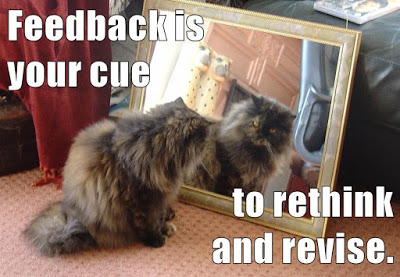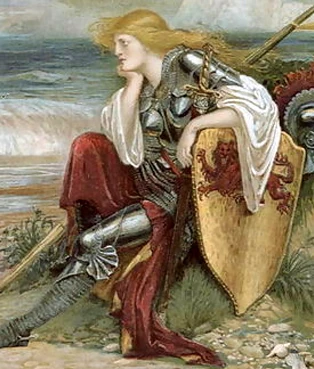I stared at the book in my hand, my fingers grazing over the intricate cover. Gio had given it to me as a birthday gift. He gave me a book every year. It was a tradition that was started at the beginning of their friendship, when he gave her his copy of Harry Potter to read for her eighth birthday.
I should have known then that went he had felt for me was so much more than what I felt for him. No one gives up their copy of Harry Potter without having some sort of connection to the person it’s being lent to.
“Lancelot is probably one of my favorite heroes” I heard from behind me, and my head snapped up and twisted around to zero in on who it was coming from.
Gio’s younger brother, Paul, leaned against the doorframe, smirking at me with amusement. His eyes were on my face, but brought the book up to my chest, hiding it from his view anyway. This was how it always was, with Paul. He teased, I retaliated, we continued on our merry way.
It was a shame I was also in love with him.
Unlike his brother, Paul was tall, muscular in an obvious way that let you know he worked out. He flaunted it regularly, while Gio hid behind his books and his science and his, well, everything else.They had the same coloring – dark, with dark hair and dark eyes – much like plenty of other Italian families. But Paul was different. He was beautiful in a way that sucked all the air from my chest and threatened to suffocate me. I couldn’t look at him for more than a few moments without feeling my cheeks start to redden.
Which is why my eyes drop to the book pressed to my chest as his own eyes dropped to it as well.
“Of course, you like Lancelet. He’s a jackass.” I muttered, and I could hear Paul’s chuckle from the doorway. Glancing upward, I saw him look hesitant for a moment before pushing off the frame. Taking a step towards me, he tilted his head slightly, his smirk softer than before.
“Happy birthday, Francesca, He said, moving to sit down next to me. I don’t know if he was aware of the fact that my heart skips two beats whenever he said my name. I hope he couldn’t hear it. His arm brushed mine as he sat, the musk of his cologne filling my nose with his closeness.
“Thanks,” I said, placing the book down on my lap and looking up at him. This was a simple conversation. I could handle this. Right?
Wrong.
His eyes were right on mine, a dark pool that seemed to draw me in as soon as they met with mine. We were so close that I could feel his breath falling onto my face, the smell of coffee and mint following. I had never been this close to him before, and examining his face at this angle, I could see there were golden specks scattered throughout his irises.
I was memorized.
“Francesca,” He whispered, making my heart constrict, and I gripped the book in my lap tighter to make sure that he couldn’t see my hands shake. But his eyes were not on my eyes, or my book, but my lips.
I should have been more aware that this was what was coming. I had read about it so many times, it should have been obvious to me. But it still caught me by surprise. Paul caught me by surprised.
He leaned in far enough that his mouth pressed to mine, our noses touching as his hand reached up and intertwined his fingers in my hair. I reacted immediately, my body moving closer. My hands released the hold on the book so that I could cup Paul’s cheeks. I deepened the kiss, tasting his coffee and the mint, reveling in the fact that this was happening.
Paul was kissing me.
A loud noise jostled me. The two of us sprang apart as though we had been shocked, the sound bringing up back to reality. I stared at him for a long moment, his mouth swollen from our kiss, his hair slightly disheveled.
With my wits about me, I turned slightly from Paul’s gaze to find Gio standing in the hallway, a pile of books now a mess on the floor. The look on his face causing my heart to constrict and break into a million pieces. I had no time to move away from Paul before Gio was sprinting down his hallway, away from us.
The look on his face was something I would never forget.
Like he had been stabbed.
 |
| Image Info: Paolo and Francesca da Rimini (Dante Gabriel Rossetti, 1867). Found on Wikipedia. |
Author's Note: So in Dante's Inferno, you're only given the outline of what happened in the story of Paolo and Francesca. Basically, Francesca was married to Giovanni (who is extremely crippled and ugly), and she doesn't love him. In fact, she's in love with his younger, attractive brother, Paolo. Paolo and Francesca start an affair after reading the story of Lancelet and Guinevere. Giovanni finds out about this, and he stabs them both to death. Dante placed them in the second level of Hell, assigned to the lustful. In my story, I focused on their story rather than that of Dante's. I made it Francesca's point of view and set it during modern day. Instead of being married, Francesca and Gio are just best friends, and Paul is the attractive brother. It's just a modern, Young Adult romance, and Gio doesn't kill anyone. Though I sort of referenced the stabbing with the last line.
Bibliography: Dante's Divine Comedy, translated by Tony Kline (2002). Link to online reading.
















